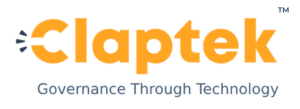Integrated risk management (IRM) is a broad practice that adds to the security, risk tolerance profile, and vital decisions of an organization. It helps to focus on assessing risks with regard to business methodology, instead of compliance-based risk management approaches. Most integrated risk management projects ought to be cooperative and incorporate leaders from both the IT and business sides.
Integrated risk management is a bunch of practices and cycles upheld by innovation that assists organizations with further developing directions and visibility into their security and risk identification. It perceives that every association face risks and threats, requiring a risk-driven approach to dealing with information security.
.

Benefits of Integrated Risk Management:
An integrated risk management technique connects the points between organizational functions and vital business objectives. Taking an integrated risk management methodology as opposed to a restricted degree approach enjoys several advantages:
Broader scope of choices: Rather than focusing on alleviating risks, integrated risk management systems intend to consider the full scope of possibilities related to every business strategy aspect. A more exhaustive assessment of every business result might uncover opportunities to benefit from potential gains.
Improvements in risk management: It assists with making more exact information about risk examination, which assists leaders with settling on better decisions. Risks can be distinguished and conveyed among business and IT groups. Organizations utilizing integrated risk management-based methodologies will be better outfitted to manage adverse results, with proper responses planned and resources set up, and will probably experience less monetary loss.
Parts of Integrated Risk Management: Internal environment, analysis, identification, risk evaluation, risk control, data, correspondence, risk treatment and risk monitoring are the eight parts of Integrated Risk Management that give detailed insights experiences into the risks assessed.
Risk-mindful organizational culture: A more proactive culture is accomplished by taking a more extensive, cross-departmental way to deal with risk mindfulness and management. Risk will turn into a basic part of the business procedure for organizations.
Cyber protection: It safeguards you from a wide range of advanced digital cyber attacks and safeguards your frameworks, organisations, projects and applications.
Clients and application frameworks benefit from Integrated Risk Management since it gives precise, verifiable and reliable data.
Conclusion:
A well-managed Integrated Risk Management process permits an organisation to increase capital markets, and expand functional productivity while diminishing working expenses. It will show a more prominent capacity to answer emergencies on schedule and recuperate rapidly from their effects.
It brings fewer struggles and lower stress levels in the association and increases employee satisfaction and facilitates timely decision-making and high-quality results.
Therefore, integrated risk management is significant and Claptek’s risk management experts help you to provide the best solution.
